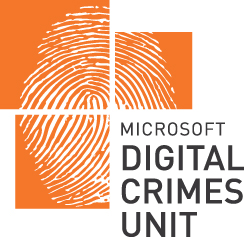PhotoDNA - Science on the Side of Abused Kids
 Like many, I’ve long been a fan of the television show CSI:at least in most of its incarnations. I’ve often wondered though whether the amazing application of scientific techniques could really support law enforcement as easily as it is sometimes portrayed in the show’s episodes. Could information technologies for example really help find and eliminate those criminals in our society who seek to use the ubiquity and openness of the internet to prey on not just the vulnerable but every one of us?
Like many, I’ve long been a fan of the television show CSI:at least in most of its incarnations. I’ve often wondered though whether the amazing application of scientific techniques could really support law enforcement as easily as it is sometimes portrayed in the show’s episodes. Could information technologies for example really help find and eliminate those criminals in our society who seek to use the ubiquity and openness of the internet to prey on not just the vulnerable but every one of us?
For many years Microsoft has been working in partnership with law enforcement agencies across the globe to help defeat one particularly hideous area of crime – the sexual abuse and exploitation of children online. When child pornography images are shared and viewed amongst predators online, it is not simply the distribution of objectionable content, it is an attack on the very basis of our community. These crimes turn one appalling moment of child sexual abuse into an unending chain of exploitation of that child.
Without question, the exploitation of children in any form should be abhorrent to us all. The sexual exploitation of children is beneath contempt – a sickness that dehumanizes victims and predators alike; a defilement of the very basic elements that enable us to form and maintain a community among and between people.
It is not possible nor right to publicly reveal the story of a victim of child online exploitation even when to do so would make the crime more real to each of us. Instead in this field it is enough to know that every day, across the globe, law enforcement officers working perform their duties in the sure knowledge that they are fighting a depravity that has very real and innocent victims. They do incredible work in circumstances that challenge and often hurt them in ways that are unseen and undetected. They need the support and encouragement of every one of us.
As the criminals chosen device for perpetrating their evil is technology, it is right that technology companies do whatever they can to support our law enforcement officers. Through a new partnership between Microsoft and NetClean, technology developed by Microsoft known as PhotoDNA will be made available to law enforcement at no charge. The technology will be incorporated in NetClean Analyze, the Child Exploitation Tracking System (already provided to and used by Australian authorities) and via direct licensing.
PhotoDNA will help law enforcement more quickly identify and rescue victims and hopefully lead to the arrest and conviction of those who perpetrate crimes against children.
PhotoDNA is a signature-based image-matching technology developed by Microsoft Research in partnership with Dartmouth College and is already used by Microsoft and Facebook to find child sexual abuse images uploaded to our services. The technology not only detects matches but enables reporting of suspect images to law enforcement agencies for investigation.
PhotoDNA helps calculate the distinct characteristics of a digital image to match it to other copies of that same image and can match images that are not digitally identical, making it possible to match images accurately and rapidly across millions of files – even if photos have subtle differences such as being resized, etc.
Originally designed for electronic service provider use, law enforcement globally voiced strong interest in the potential use of PhotoDNA in child sexual exploitation investigations. Based on this expressed need, Microsoft’s Digital Crimes Unit talked with many of the leading law enforcement agencies around the world to understand and address their need. As a result, Microsoft is making PhotoDNA available to law enforcement worldwide.
Make no mistake this is a growing area of crime. In 2011 alone the US based National Center for Missing & Exploited Children (NCMEC) reviewed and analysed more than 17.3 million photos and videos of child pornography. These included images of children being victimised across the globe, including from Australia. Worryingly, NCMEC has reported that the images they see are becoming increasingly violent and targeting younger victims.
Microsoft is participating in this partnership because we can and we know we must. We have the opportunity and therefore the responsibility to use technological innovation to help fight technological-enabled crimes against children. Our Digital Crimes Unit has as its mission to transform the fight against digital crime, including technology-facilitated crimes against children.
We are not the makers or enforcers of the law. Our role is not to be the judge or jury on those who abuse children. Society has established processes and courts for doing that. Our role is simply to partner with law enforcement agencies and other private and public sector bodies to do what we can to help locate, report and eliminate the tens of millions of images of abuse of children that until now would have possibly gone undetected over the internet.
We have an innovation in PhotoDNA that we and others believe can help. That technology will now be available to law enforcement agencies across the globe in the fight against child online sexual abuse. It will be available to authorities in Australia.
This is another good day to be an employee of Microsoft. It is a good day for all who want to help in the fight against the abuse of children.
To stay up-to-date on the latest developments on the fight against child sexual exploitation and other forms of cybercrime, please visit https://www.microsoft.com/dcu or follow the Microsoft Digital Crimes Unit on Facebook and Twitter.
Simon Edwards Head of Corporate Affairs